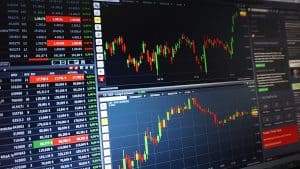Have you ever wondered how successful traders predict currency price movements in the forex market? While no one can predict the market accurately, beginners can use several techniques and strategies to improve their chances of making successful trades. What should beginners focus on to better understand how the forex market works and what drives price fluctuations? Let’s dive into the core concepts and tools you need to predict forex movements effectively.
Understanding Market Trends in Forex Trading for Beginners
When learning forex trading for beginners, one of the most important concepts to understand is market trends. A market trend is the general direction in which a currency pair’s price moves up, down, or sideways. Identifying trends early allows you to trade in the same direction, improving your chances of success.
To spot trends, traders often rely on chart patterns and technical indicators like moving averages, which smooth out price data and reveal the overall direction. Beginners should familiarise themselves with short-term and long-term trends, as each can offer different trading opportunities.
Using Technical Analysis to Predict Forex Movements
Technical analysis is used to forecast price movements dependent on historical market data, including price and volume. By studying charts and indicators, traders aim to identify patterns that have previously resulted in price changes. General technical indicators include moving averages, the relative strength index (RSI), and Fibonacci retracements.
Mastering technical analysis takes time for beginners, but it’s a powerful tool for predicting forex movements. A combination of indicators can help traders spot trends, reversals, and price breakouts, allowing for better decision-making.
Fundamental Analysis: Understanding Economic Factors
Fundamental analysis analyses the economic, social, and political factors influencing currency prices. For example, interest rate changes, inflation, and geopolitical tensions can all affect the value of a currency. By watching global economic news, beginners can understand how these factors impact currency movements. A beginner-friendly approach is to follow a financial calendar, which outlines significant events like central bank announcements, employment reports, and inflation data—understanding how these events impact currencies will enhance your ability to predict market movements based on the current economic landscape.
Sentiment Analysis: Gauging Market Emotion
Sentiment analysis is a lesser-known but helpful method of predicting forex movements. It involves understanding how market participants feel about the market—whether optimistic (bullish) or pessimistic (bearish). By gauging market sentiment, you can gain insights into potential market trends.
Sentiment indicators, such as the Commitment of Traders (COT) report, show how different market participants are positioned in the market. This can help you identify potential price reversals or continuations. Beginners can use sentiment analysis alongside technical and fundamental analysis for a well-rounded approach to forex trading.
Utilising Support and Resistance Levels
Support and resistance levels are fundamental concepts that help traders predict price movements. Support is the price level where a currency tends to find buying interest, preventing it from falling further, while resistance is where selling interest builds up, preventing the price from rising.
Traders use these levels to anticipate potential price reversals or breakouts. When a currency reaches a support or resistance level, it can bounce back or break through, leading to significant price movements. Identifying these levels will help beginners make more informed trading decisions.
Building a Forex Trading Plan
A well-thought-out trading plan is essential for predicting forex movements successfully. This plan should outline your trading goals, risk tolerance, and the strategies you intend to use. It should also include your criteria for entering and exiting trades and how much capital you will risk on each trade.
Consistency is critical when following a trading plan. It helps beginners avoid impulsive decisions based on emotions and provides a structured approach to navigating the forex market. Over time, as you gain experience, you can tweak your plan based on what works best for you.
Choosing the Right Trading Platform
Before diving deep into forex trading, choosing the right trading platform is essential. The right platform can notably impact your trading experience and success. Here are vital things to consider:
- Regulation for security. A platform regulated by a trusted financial authority ensures your funds are safe and trades are conducted reasonably.
- Ease of use. Choose a user-friendly platform with an innate interface, especially if you’re a beginner in the world of trading.
- Comprehensive charting tools. The platform should offer robust charting and analysis tools to help you make the best decisions based on technical analysis.
- Low trading fees. To maximise your potential returns and reduce costs, opt for platforms with competitive spreads and low commissions.
- Customer support availability. Ensure the platform provides reliable and responsive customer service to assist you whenever technical issues or questions arise.
For those exploring forex trading for beginners, predicting currency movements involves mastering market trends, technical analysis, and understanding fundamental economic factors. Choosing the right platform and employing effective risk management will further enhance your ability to succeed in the forex market.

